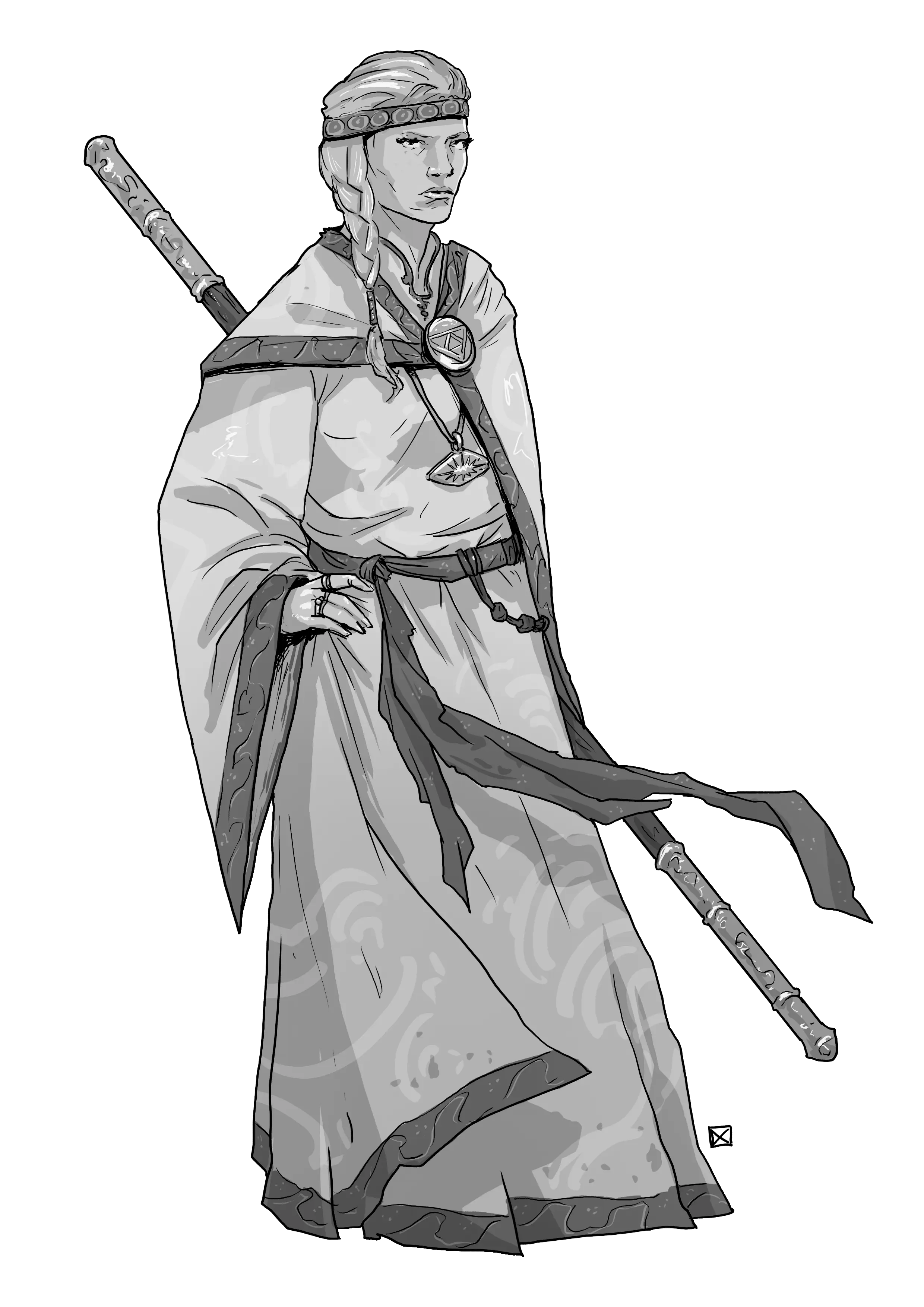Faith and Belief in a Low Magic Setting
The default lore of Foe Foundry assumes a Low Magic Setting where divine beings do not directly communicate with mortals. If you run a setting where the gods are known to exist and actively intervene in the Mortal Realms then you can easily modify the lore to include direct involvement by the Gods. But it is much more difficult to remove the Gods from the Machine, so the lore is presented here with the least assumptions being made about your setting.

Distant Gods
Mortals cannot know one way or the other whether the Gods exist, or even ever existed. What is undisputable is that the faith and belief of mortals is powerful and draws the attention of many mysterious and unknowable entities beyond the veil of the Mortal Realms. Mortals often direct their attention and devotion to one or more Saints, who are particularly devout, powerful, or wise mortals who gain followers and admirers after their death. Some believe that these Saints act as conduits to the mysterious Gods and help guide their divine energies to mortals in need, while others believe that the Saints themselves become Gods with sufficient worship and belief. In any case, there are no Mortals alive today who know the truth to this great cosmic mystery.
Saints and Martyrs
When a mortal's deeds resound throughout the ages and their sacrifice, wisdom, or power inspires lasting reverence, then they may become revered as a Saint after their passing. Whether Saints act as intermediaries for higher powers and channel the Divine to mortals, or whether they become divine themselves is a matter of debate. Many mortals direct their prayers and supplications to Saints rather than the distant Gods.
Heresy
Some heretics whisper that Saints and Gods are the same - differing only by time and worship. Others suggest there are no Gods at all, only the accumulated dreams of mortals, coalescing into something other. Others still claim the Gods are dead, or abandoned the Mortal Realm long ago, and that the Divine is simply the remnants of their former glory. In dark corners, some worshipers question: if belief creates miracles, then what power answers their prayers?
Themes of Tension and Mystery
The lore of Foe Foundry thrives on ambiguity. Is the Priest channeling divine mercy, or unknowingly feeding a slumbering eldritch horror with ritual praise? Is the Cultist truly in league with darkness, or is their patron just misunderstood? Does it matter whether a miracle comes from a saint, a god, or a thing with too many eyes?
GM Tips
You may wonder, why should I create a setting that differs from the default 5E lore? By making the gods distant, unknowable, or perhaps even absent, you gain several worldbuilding benefits:
- The players may wonder why the gods are missing? What happened to them?
- You don't need to create complex systems justifying why the gods don't simply solve every problem themselves and prevent any fun adventures from ever happening
- You can maintain that gritty dark-fantasy feeling that can be difficult to manage when gods are walking around everywhere and interfering in everything
DO:
- Lean into the mysterious and unknowable nature of the Divine
- Create ambiguity around the source of divine power, intent and will. Use messages, portents, dreams.
- Discuss this element of the world's lore with any Cleric player during Session Zero
- Highlight that the PC's divine powers are real, tangible, rare, and miraculous!
DON'T
- Don't surprise the player with a "Your god is actually an Archfiend, surprise!" unless they've indicated they're interested in that sort of idea
- Don't have a God speak directly to the player character
- Don't have extraplaner entities "explain" how the metaverse is structured. If asked, the entity laughs, lies, or whispers the horrible truth into the character's ear who then subsequently suffers traumatic damage to their psyche
Ready to Channel the Unknown?
Build a Priest using the Foe Foundry Monster Generator:
Priest
Summoned with Foe FoundryMedium Humanoid (Priest)
AC 15 (Chain Shirt, Shield) Initiative +0 (10)
HP 45 (7d8 + 14)
Speed 30 ft.
| Mod | Save | ||
|---|---|---|---|
| Str | 14 | +2 | +2 |
| Dex | 10 | +0 | +0 |
| Con | 14 | +2 | +2 |
| Mod | Save | ||
|---|---|---|---|
| Int | 10 | +0 | +0 |
| Wis | 16 | +3 | +3 |
| Cha | 10 | +0 | +0 |
Skills Religion +2, Medicine +5, Perception +5
Senses Passive Perception 15
Languages Common
CR 2 (450 XP; PB +2)
Traits
Armor Master. The priest reduces the amount of bludgeoning, piercing, and slashing damage it receives by 2.
Actions
Multiattack. The priest makes two Mace attacks.
Mace. Melee Weapon Attack: +5 to hit, reach 5ft., one target. Hit 7 (1d8 + 3) bludgeoning damage and 2 (1d4) radiant damage.
Spellcasting. The priest casts one of the following spells, using Wisdom as the spellcasting ability (spell save DC 13):
1/day each: Cure Wounds, Detect Evil and Goodc, Lesser Restoration, Dispel Magic
Bonus Actions
Warding Bond (1/day). The priest forms a bond with a willing creature within 30 feet. Both the priest and the target gain a +1 bonus to AC and resistance to all damage. Whenever the priest or target takes damage, the other takes the same amount of damage.